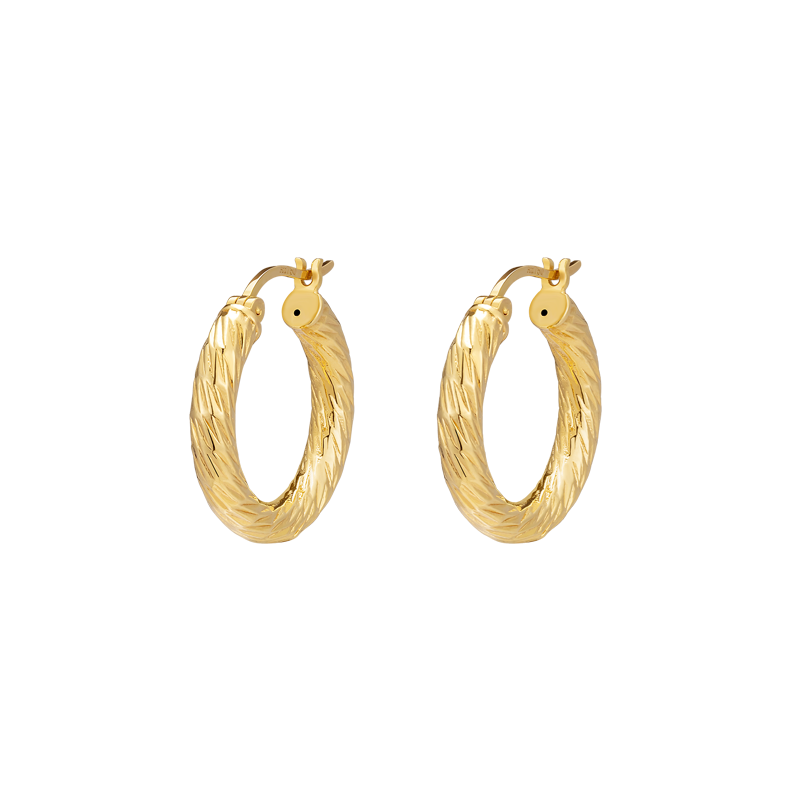How Are Pearls Formed?
Pearls, nature's most delicate treasures, are a symbol of purity, beauty, and timeless elegance. On various important occasions in history, many women chose to wear pearl necklaces to enhance their beauty. Over centuries, these luminous orbs have captivated hearts with their unique charm. But how exactly are pearls formed? It’s a process as beautiful and intricate as the pearls themselves, unfolding quietly in the depths of the ocean.
How Are Pearls Formed?
At its core, pearl formation begins when an irritant, such as a grain of sand or a small parasite, enters the shell of a mollusk. To protect itself, the mollusk secretes a substance called nacre (pronounced "nay-ker") around the irritant. Over time, layer upon layer of nacre is deposited, hardening and forming the pearl. This delicate, natural process takes years to complete, culminating in the creation of a gleaming, smooth pearl.
Why Do Pearls Form?
Pearls are nature's answer to irritation. When a foreign object enters the mollusk’s shell, it triggers a defensive response. The mollusk, unable to expel the irritant, begins to coat it with nacre. This natural defense mechanism aims to protect the mollusk from harm by encasing the irritant in a smooth, shiny layer. Over time, this coating builds up, eventually forming a pearl.
How Long Does It Take for a Pearl to Hatch?
The journey from irritation to pearly perfection is not a quick one. On average, it takes about 2 to 4 years for a pearl to fully form, depending on the type of mollusk and environmental factors. Some saltwater pearls can take slightly longer, while freshwater pearls might take a bit less time. Patience is key in the pearl’s creation, with each layer of nacre adding depth and beauty to the final result.
What Determines the Size of a Pearl?
The size of a pearl is influenced by several factors, including the species of mollusk, the environmental conditions, and how long the mollusk has been secreting nacre. Larger pearls typically come from mollusks that have had more time to deposit layers of nacre. The nucleus around which the nacre forms also plays a significant role. The more time the mollusk has to coat the nucleus, the larger and more lustrous the pearl will become.
Do Different Types of Mollusks Produce Different Kinds of Pearls?
Yes, the type of mollusk plays a crucial role in determining the type of pearl produced. Saltwater mollusks, like the Akoya or South Sea oysters, tend to produce rounder, smoother pearls. Freshwater mollusks, on the other hand, often produce a variety of shapes and sizes, including unique baroque pearls. The species of mollusk dictates not only the shape but also the size and luster of the pearl, creating a rich diversity of pearls in the world.
Why Do Pearls Have Different Colors?
The stunning variety of pearl colors is one of the most enchanting features of these natural gems. The color of a pearl is influenced by several factors, including the species of mollusk, the water’s mineral content, and even the environmental conditions in which the mollusk lives. For instance, black pearls come from the black-lipped oyster, while white pearls are often produced by the Akoya oyster. The overtones of the pearl can also vary, ranging from rose to green, adding another layer of complexity and beauty to each pearl.
Common Types of Pearls in Pearl Necklaces
Here are the most common types of pearls used in pearl necklaces:
-
Akoya Pearls: Known for their round shape and high luster, they are mostly white or cream and perfect for classic designs.
-
South Sea Pearls: Larger in size, these pearls come in white or golden colors and are considered luxurious and high-end.
-
Tahitian Pearls: Famous for their dark colors, like charcoal and peacock green, they give a bold, exotic look.
-
Freshwater Pearls: Available in a variety of colors and shapes, they are more affordable and great for everyday jewelry.
-
Keshi Pearls: Irregularly shaped and natural, often used for more bohemian-style necklaces.
Each type offers a unique charm, perfect for different styles and occasions.
Summary
Pearl formation is a mesmerizing and slow process, where the mollusk transforms irritation into beauty. From the time the irritant enters the shell to the moment the pearl is born, nature’s elegance shines through in every layer of nacre. Whether it’s the size, color, or type of pearl, each one tells a unique story of nature’s resilience and artistry. When choosing pearls, remember that each one holds a piece of the ocean’s soul, carefully crafted over years, making them the perfect symbol of timeless beauty and elegance.
Quick Overview of Pearl Formation:
| Factor | Influence on Pearl |
|---|---|
| Irritant | Triggers the formation of nacre around it. |
| Mollusk Type | Determines the size, shape, and type of pearl. |
| Time | The longer the mollusk coats the irritant, the larger the pearl. |
| Environmental Conditions | Affects the luster, color, and quality of the pearl. |
| Nacre Layers | More layers lead to larger, shinier pearls. |
By understanding the process of how pearls are formed, you gain a deeper appreciation for the natural beauty and elegance they embody. Each pearl is not just a gemstone but a symbol of nature’s quiet craftsmanship and enduring allure.












